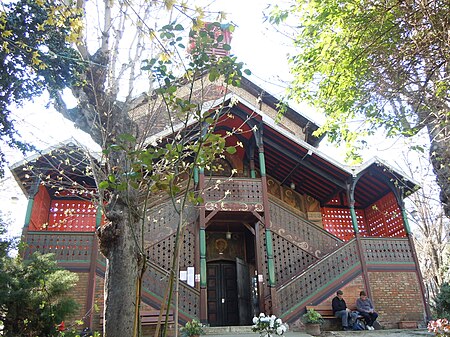Église Saint-Serge, Paris

The Église Saint-Serge is a parish Russian Orthodox Church located at 93 rue de Crimée in the 19th arrondissement of Paris. It was originally a Protestant church for the German community, but was requisitioned by the French government at the beginning of the First World War. After the war, in 1924, it was sold by the French government to the Russian Orthodox church, and consecrated in 1925.The church was under the jurisdiction of the Archbishop of Orthodox of Churches of Western Tradition in Europe, headed by the Ecumenical Patriarch of Constantinople. In 2019 it was transferred to the authority of the Patriarch of the Russian Orthodox Church in Moscow. The site also is home to the Institute of Orthodox Theology, of Saint Serge.
Excerpt from the Wikipedia article Église Saint-Serge, Paris (License: CC BY-SA 3.0, Authors, Images).Église Saint-Serge, Paris
Rue Meynadier, Paris 19th Arrondissement (Paris)
Geographical coordinates (GPS) Address Website External links Nearby Places Show on map
Geographical coordinates (GPS)
| Latitude | Longitude |
|---|---|
| N 48.88336 ° | E 2.38373 ° |
Address
Église Saint-Serge
Rue Meynadier
75019 Paris, 19th Arrondissement (Paris)
Ile-de-France, France
Open on Google Maps











